Friday, October 5, 2021 – Envelopes
- Mary Reed

- Nov 5, 2021
- 12 min read
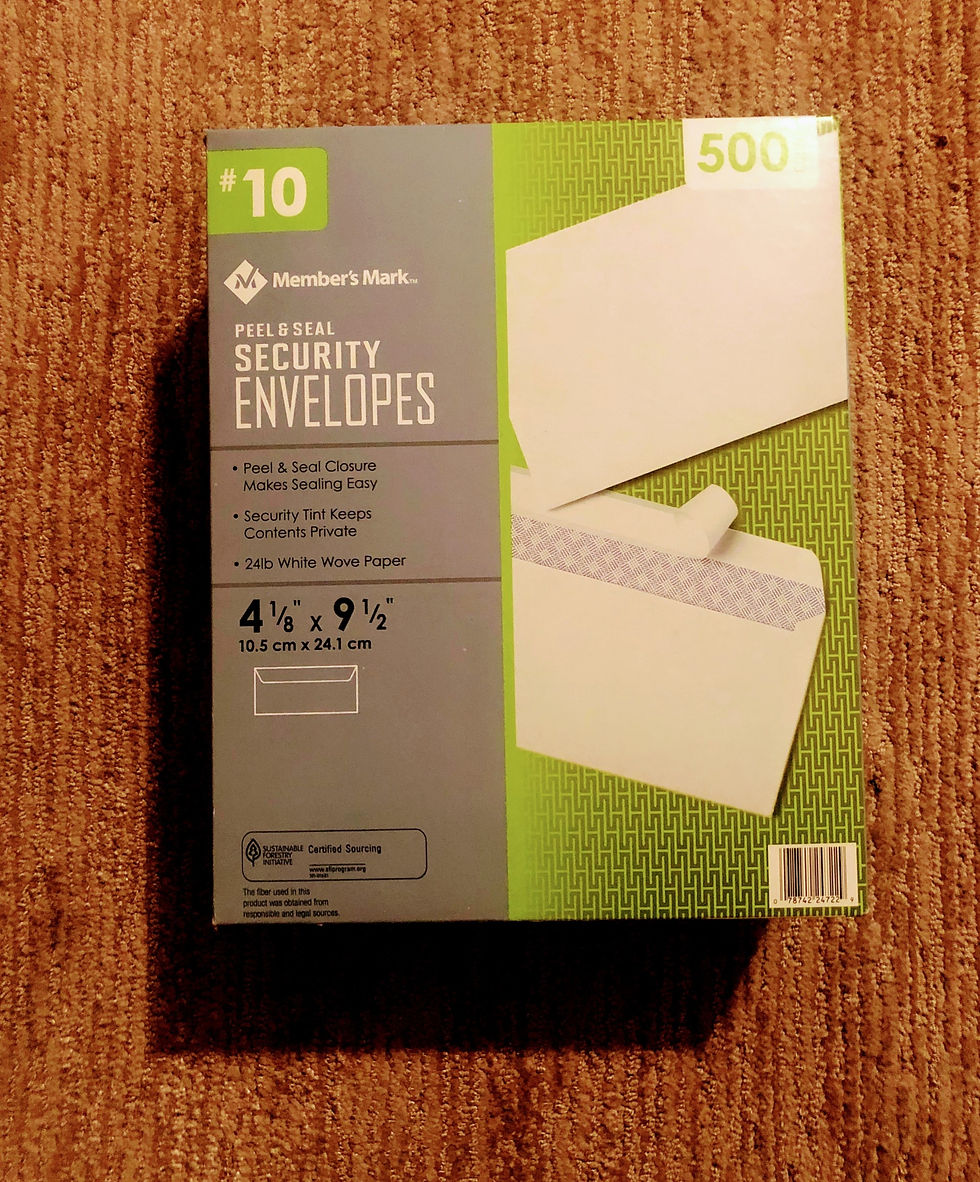
The photo is of a box of 500 envelopes I bought at the beginning of the pandemic. I didn’t think I would need that many, but I had to go to Sam’s Club anyway and did not want to expose myself to any more people at another store. So, I just bought the giant box of envelopes. A year and a half later, I have used almost all of them. The reason is because an elderly friend of mine in Tyler — which is about 100 miles from Dallas — moved to a nursing home and would frequently call me complaining of loneliness. I talked to her about the blog I was writing, and she wanted to read it but was unable to use a computer. So, every day I started printing out my blog post, putting it in one of those envelopes and mailing it to my friend. She was thrilled to receive something in the mail every day and started a library of my blog posts at her nursing home. You just never know when you are going to need 500 envelopes. As a teenager, I can remember making my own envelopes out of colorful magazine pages. A lot of the teen girls were doing it to show their creativity. Depending on how the magazine photo was folded, you could end up with some unusual envelopes. Yesterday I spent a couple of hours stuffing envelopes with three other people for a Rotary Club mailing. I know this activity is quite low tech in this age of social media, but sometimes it is effective. Let’s learn more about this longtime staple of our society — the envelope.
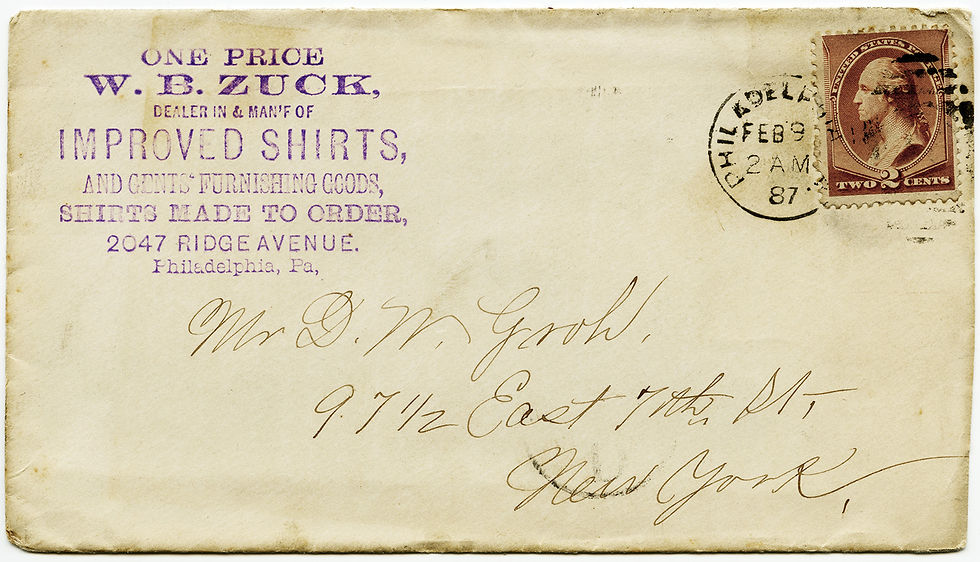
According to Wikipedia, an envelope is a common packaging item, usually made of thin, flat material. It is designed to contain a flat object, such as a letter or card.
Traditional envelopes are made from sheets of paper cut to one of three shapes: a rhombus, a short-arm cross or a kite. These shapes allow the envelope structure to be made by folding the sheet sides around a central rectangular area. In this manner, a rectangle-faced enclosure is formed with an arrangement of four flaps on the reverse side.
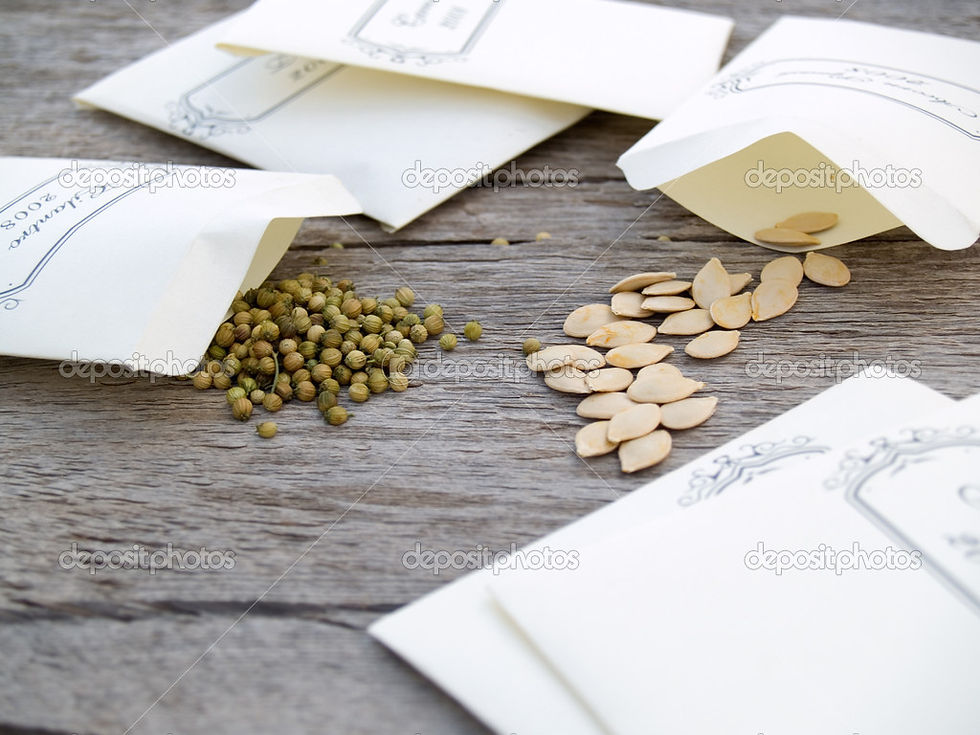
Overview
A folding sequence such that the last flap closed is on a short side is referred to in commercial envelope manufacture as a pocket — a format frequently employed in the packaging of small quantities of seeds. Although in principle the flaps can be held in place by securing the topmost flap at a single point — for example with a wax seal, generally they are pasted or gummed together at the overlaps. They are most commonly used for enclosing and sending letters through a prepaid-postage postal system.
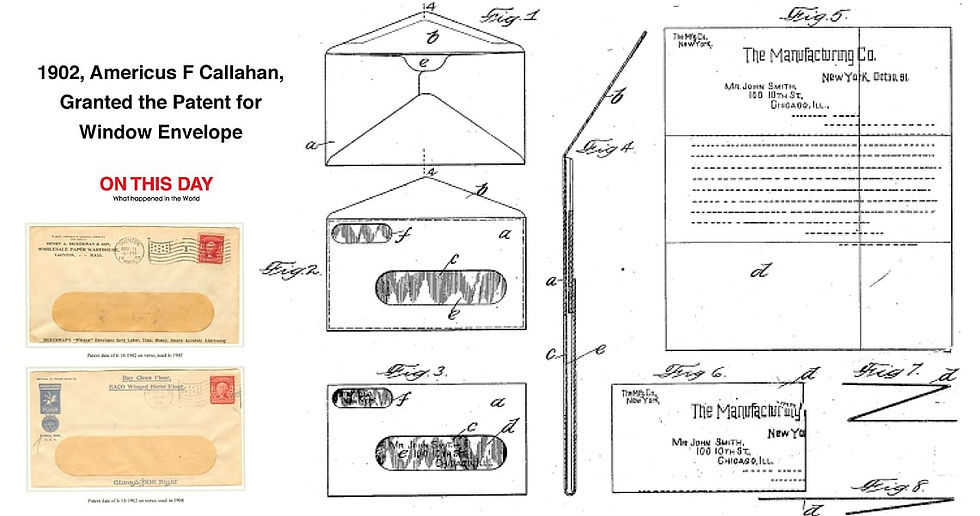
Window envelopes have a hole cut in the front side that allows the paper within to be seen. They are generally arranged so that the receiving address printed on the letter is visible, saving duplication of the address on the envelope itself. The window is normally covered with a transparent or translucent film to protect the letter inside, as was first designed by Americus F. Callahan in 1901 and patented the following year. In some cases, shortages of materials or the need to economize resulted in envelopes that had no film covering the window. One innovative process, invented in Europe about 1905, involved using hot oil to saturate the area of the envelope where the address would appear. The treated area became sufficiently translucent for the address to be readable. As of 2009, there is no international standard for window envelopes, but some countries — including Germany and the United Kingdom — have national standards.
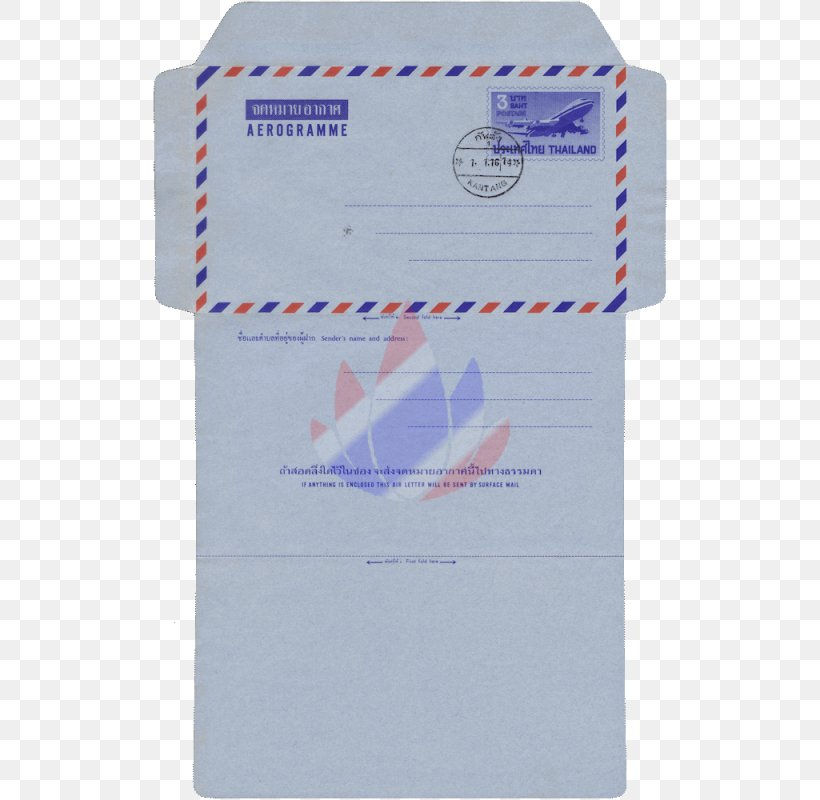
An aerogram is related to a lettersheet, both being designed to have writing on the inside to minimize the weight. Any handmade envelope is effectively a lettersheet because prior to the folding stage, it offers the opportunity for writing a message on that area of the sheet that after folding becomes the inside of the face of the envelope.
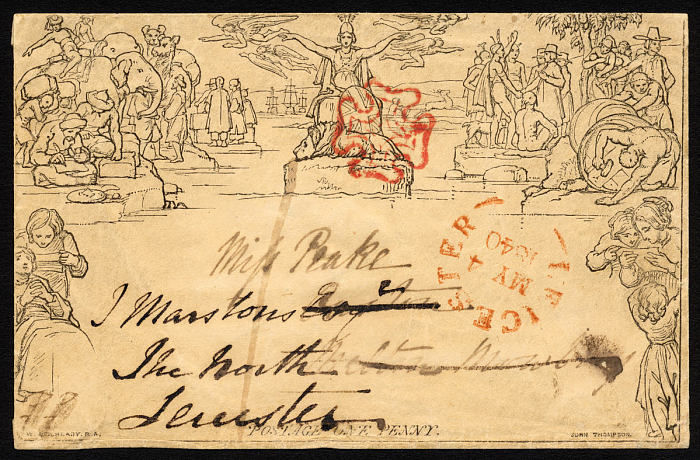
According to the Smithsonian National Postal Museum, on May 6, 1840, Great Britain issued the Mulready envelopes, the Mulready letter sheets and the first postage stamps, all as part of its postal reform movement. Prior to that time, the addressee rather than the sender had paid the postage. Over time, though, people had realized that they could avoid paying the postage by refusing to accept their mail. Since the post office had done all the work of getting a letter from point A to point B without getting paid, a significant loss of revenue ensued. Complex postal rates resulted, and rates were set artificially high to compensate for the loss.
In recognition of this problem, the British government under Queen Victoria solicited proposals for a solution. Sir Rowland Hill set forth a deceptively simple one. First, he reasoned, to recover the lost revenue, it was essential to require prepayment by the sender. This suggestion was upsetting since payment by the sender was considered insulting to addressees, suggesting the addressee couldn't afford to pay. Second, with the revenue recovery, postal rates could be reduced dramatically, which would encourage more people to use the mails, thereby generating more revenues. Seeing the logic of Hill's plan, Britain soon established a universal penny post, wherein a half-ounce letter could be sent anywhere in Britain for a penny.
Hill understood the necessity of providing the sender with a receipt for having paid in advance, implementing it in two ways: adhesive stamps to be affixed to the letter and preprinted, postage-paid envelopes and letter sheets. For the latter, a design competition produced a winner, noted artist William Mulready. The design features an allegorical figure of Britannia in the center directing letters right and left to people and creatures of the far-flung empire.
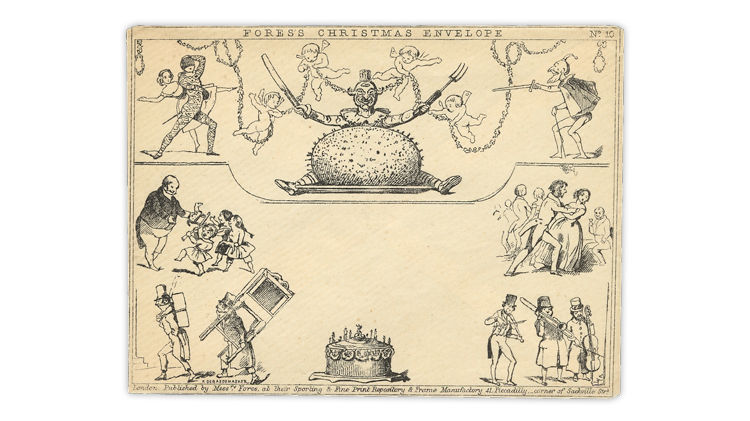
Hill believed that the envelopes and letter sheets would be popular with the public, and he provided the adhesive stamps as something of an afterthought. The public, however, ridiculed the bizarre design. Many satirical caricatures were created and circulated, some by stationers who resented the government's incursion into their trade. The widespread derision led to withdrawal and destruction of the Mulready products after a very short time. Postage stamps, on the other hand, proved convenient and were widely accepted.
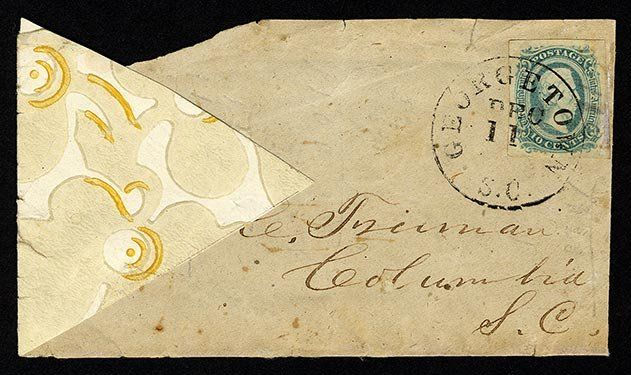
During the U.S. Civil War those in the Confederate States Army occasionally used envelopes made from wallpaper, due to financial hardship.
A "return envelope" is a pre-addressed, smaller envelope included as the contents of a larger envelope and can be used for courtesy reply mail, metered reply mail or freepost — business reply mail. Some envelopes are designed to be reused as the return envelope, saving the expense of including a return envelope in the contents of the original envelope. The direct mail industry makes extensive use of return envelopes as a response mechanism.
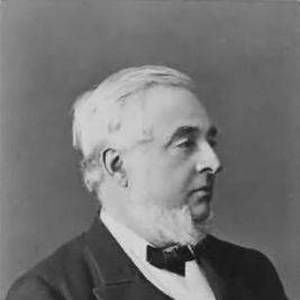
Up until 1840, all envelopes were handmade, each being individually cut to the appropriate shape out of an individual rectangular sheet. In that year George Wilson in the United Kingdom patented the method of tessellating or tiling a number of envelope patterns across and down a large sheet, thereby reducing the overall amount of waste produced per envelope when they were cut out. In 1845 Edwin Hill and Warren de la Rue obtained a patent for a steam-driven machine that not only cut out the envelope shapes but also creased and folded them. Mechanized gumming had yet to be devised. The convenience of the sheets ready cut to shape popularized the use of machine-made envelopes, and the economic significance of the factories that had produced handmade envelopes gradually diminished.
As envelopes are made of paper, they are intrinsically amenable to embellishment with additional graphics and text over and above the necessary postal markings. This is a feature that the direct mail industry has long taken advantage of — and more recently the Mail Art movement. Custom printed envelopes has also become an increasingly popular marketing method for small business.
Most of the over 400 billion envelopes of all sizes made worldwide are machine-made.
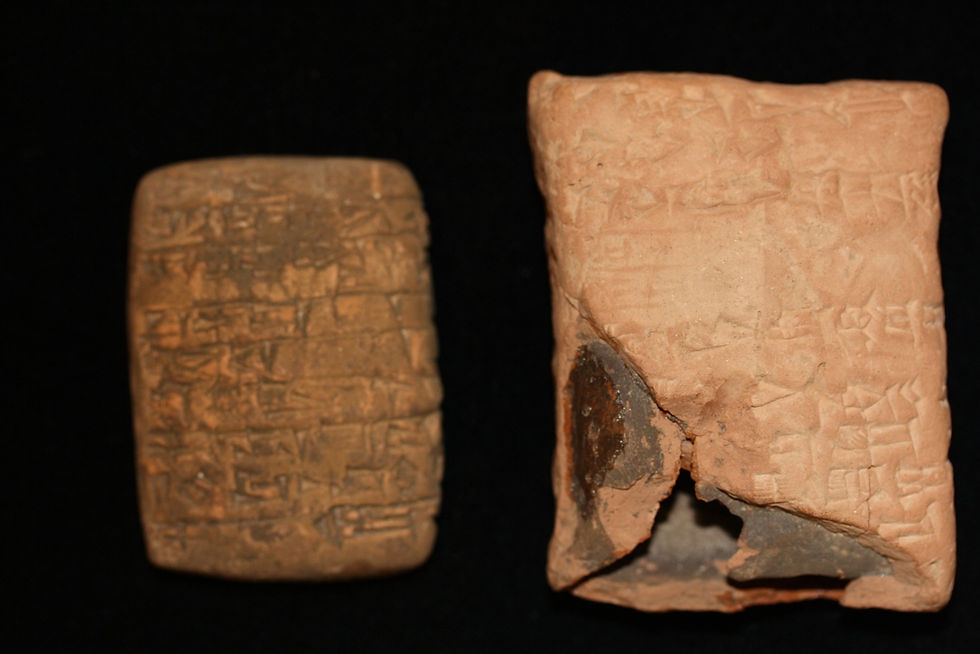
History
The first known envelope can be dated back to around 3500 to 3200 BC in the ancient Middle East. Hollow clay spheres were molded around financial tokens and contracts and were used in private transactions. According to Nicolina Cabezal’s Nov. 8, 2013 article “The History of Envelopes — From 2000 B.C. to the Present” at jampaper.com, wet clay was folded over the original tablet message and sealed by pressing the ends together. It was then baked, causing it to harden and ensuring the tablet’s contents were safe inside. To reveal the original tablet message, one would have to break the clay envelope.
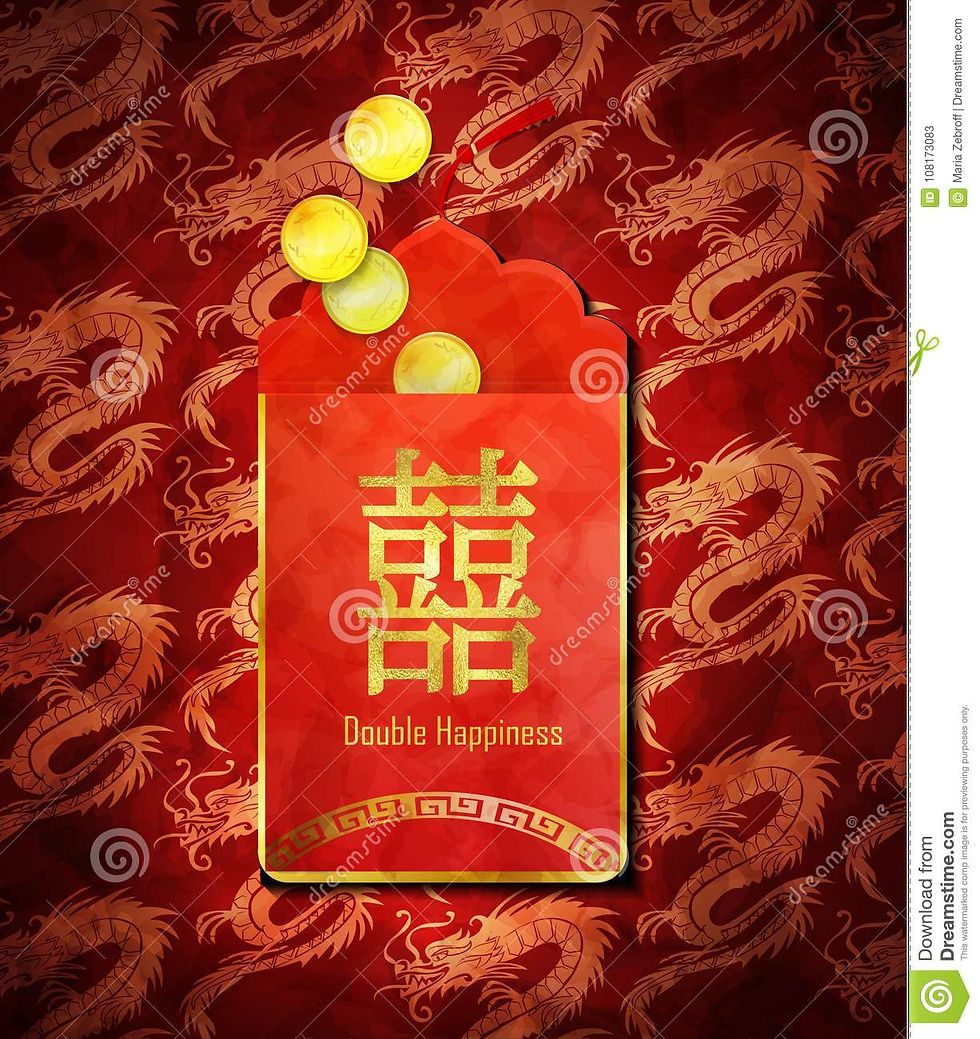
Paper envelopes were developed in China, where paper was invented in the second century BC. Paper envelopes — known as chih poh — were used to store gifts of money. In the Southern Song dynasty, the Chinese imperial court used paper envelopes to distribute monetary gifts to government officials.
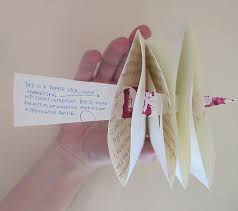
In Western history, from the time flexible writing material became more readily available in the 13th century until the mid-19th century, correspondence was typically secured by a process of letter folding and sealing which sometimes employed elaborate letterlocking techniques to indicate tampering or prove authenticity. Some of these techniques, which could involve stitching or wax seals, were also employed to secure handmade envelopes.
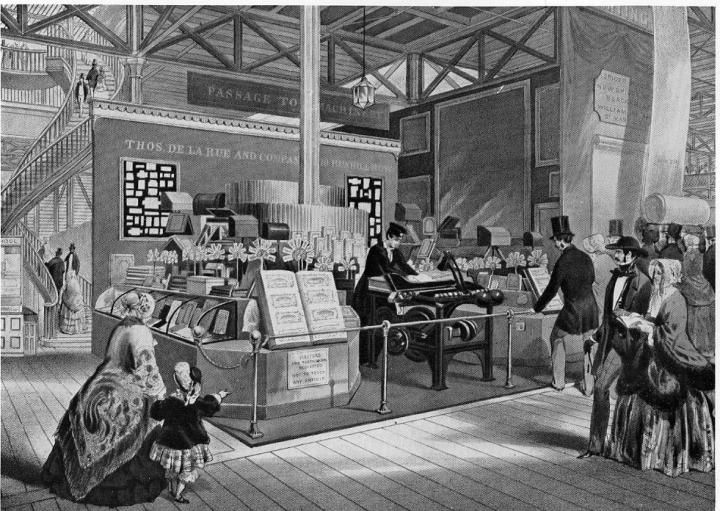
Prior to 1845, handmade envelopes were all that were available for use — both commercial and domestic. In 1845, Edwin Hill and Warren De La Rue were granted a British patent for the first envelope-making machine.
The "envelopes" produced by the Hill/De La Rue machine were not like those used today. They were flat diamond, lozenge or rhombus-shaped sheets or "blanks" that had been precut to shape before being fed to the machine for creasing and made ready for folding to form a rectangular enclosure. The edges of the overlapping flaps were treated with a paste or adhesive, and the method of securing the envelope or wrapper was a user choice. The symmetrical flap arrangement meant that it could be held together with a single wax seal at the apex of the topmost flap. That the flaps of an envelope can be held together by applying a seal at a single point is a classic design feature of an envelope.
Nearly 50 years passed before a commercially successful machine for producing pre-gummed envelopes — like those in use today — appeared.
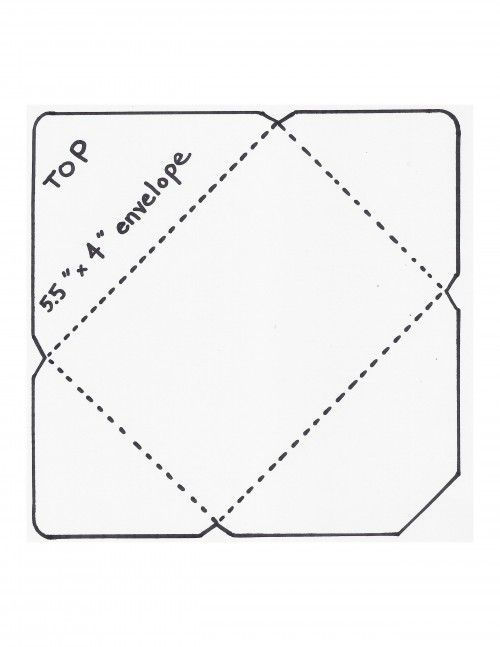
The origin of the use of the diamond shape for envelopes is debated. However, as an alternative to simply wrapping a sheet of paper around a folded letter or an invitation and sealing the edges, it is a tidy and ostensibly paper-efficient way of producing a rectangular-faced envelope. Where the claim to be paper-efficient fails is a consequence of paper manufacturers normally making paper available in rectangular sheets, because the largest size of envelope that can be realized by cutting out a diamond or any other shape which yields an envelope with symmetrical flaps is smaller than the largest that can be made from that sheet simply by folding.
The folded diamond-shaped sheet or "blank" was in use at the beginning of the 19th century as a novelty wrapper for invitations and letters among the proportion of the population that had the time to sit and cut them out and were affluent enough not to bother about the waste offcuts. Their use first became widespread in the UK when the British government took monopoly control of postal services and tasked Rowland Hill with its introduction. The new service was launched in May 1840 with a postage-paid machine-printed illustrated or pictorial version of the wrapper and the much-celebrated first adhesive postage stamp — the Penny Black — for the production of which the Jacob Perkins printing process was used to deter counterfeiting and forgery. The wrappers were printed and sold as a sheet of 12, with cutting the purchaser's task. Known as Mulready stationery — because the illustration was created by the respected artist William Mulready — the envelopes were withdrawn when the illustration was ridiculed and lampooned. Nevertheless, the public apparently saw the convenience of the wrappers being available ready-shaped, and it must have been obvious that with the stamp available totally plain versions of the wrapper could be produced and postage prepaid by purchasing a stamp and affixing it to the wrapper once folded and secured. In this way although the postage-prepaid printed pictorial version died ignominiously, the diamond-shaped wrapper acquired de facto official status and became readily available to the public notwithstanding the time taken to cut them out and the waste generated. With the issuing of the stamps and the operation and control of the service — which is a communications medium — in government hands, the British model spread around the world and the diamond-shaped wrapper went with it.
Hill also installed his brother Edwin as The Controller of Stamps, and it was he with his partner Warren De La Rue who patented the machine for mass-producing the diamond-shaped sheets for conversion to envelopes in 1845. Today, envelope-making machine manufacture is a long- and well-established international industry, and blanks are produced with a short-arm-cross shape and a kite shape as well as diamond shape. The short-arm-cross style is mostly encountered in "pocket" envelopes i.e., envelopes with the closing flap on a short side. The more common style — with the closing flap on a long side — are sometimes referred to as "standard" or "wallet" style for purposes of differentiation.
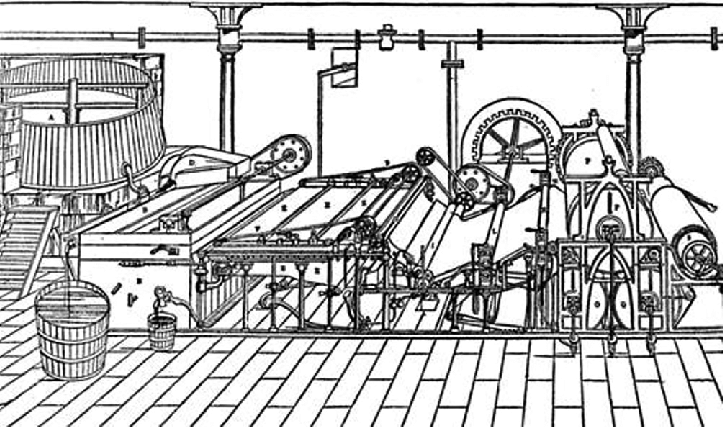
The most famous paper-making machine was the Fourdrinier machine. The process involves taking processed pulp stock and converting it to a continuous web which is gathered as a reel. Subsequently, the reel is guillotined edge-to-edge to create a large number of properly rectangular sheets because ever since the invention of Gutenberg's press paper has been closely associated with printing.
To this day, all other mechanical printing and duplicating equipment devised in the meantime — including the typewriter, which was used up to the 1990s for addressing envelopes — have been primarily designed to process rectangular sheets. Hence the large sheets are, in turn, guillotined down to the sizes of rectangular sheets commonly used in the commercial printing industry, and nowadays to the sizes commonly used as feed-stock in office-grade computer printers, copiers and duplicators.
Using any mechanical printing equipment to print on envelopes — which although rectangular — are in fact folded sheets with differing thicknesses across their surfaces, calls for skill and attention on the part of the operator. In commercial printing the task of printing on machine-made envelopes is referred to as "overprinting" and is usually confined to the front of the envelope. If printing is required on all four flaps as well as the front, the process is referred to as "printing on the flat." Eye-catching illustrated envelopes or pictorial envelopes — the origins of which as an artistic genre can be attributed to the Mulready stationery and which was printed in this way — are used extensively for direct mail. In this respect, direct mail envelopes have a shared history with propaganda envelopes or "covers" as they are called by philatelists.
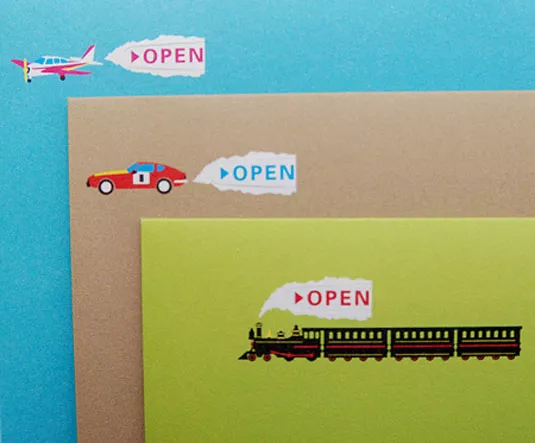
Creative envelope designs
According to the Oct. 10, 2013 article “15 creative envelope designs” at creativebloq.com, created by Japanese company D-Bros, these envelopes not only look gorgeous, they'll also ensure you'll never suffer from those painstaking paper cuts. Recipients just need to pull back a cut-out tab to make a tear in the envelope. The designs include three colors, with three different vehicles providing the rip-roaring effect. The aeroplane, car and steam train are adorably illustrated and perfectly complement the choice of colors for the envelopes.
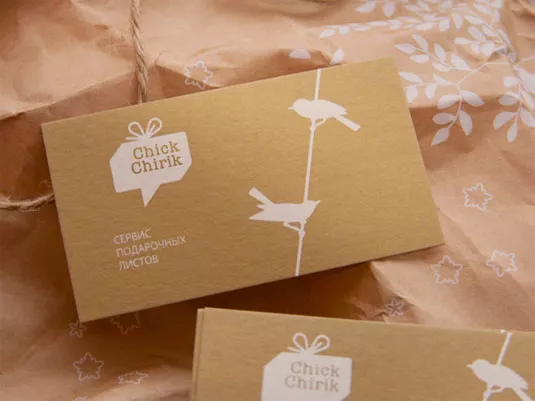
The ChickChirik gift registry project was founded to make gift-giving easy. Most materials used for the packaging — such as kraft paper and jute — are recycled, handmade, natural, soft to the touch and create a feeling of warmth. These basic yet beautiful envelope designs are gorgeous in their simplicity.
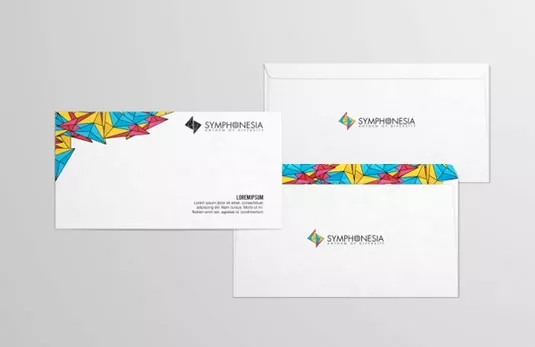
Symphonesia is an annual event organized by international relations students of Padjadajaran University, consisting of international concerts plus an international conference and festival. They make the bold decision to create a new logo each year, making the envelope design jump right out at you.
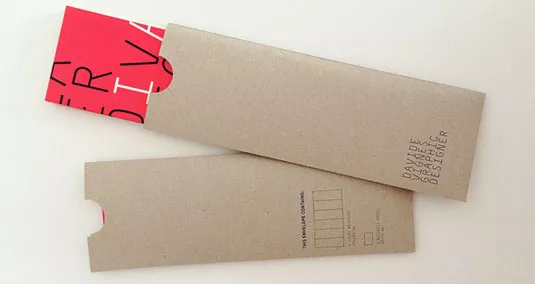
Developed for Italian designer Davide Vignes' self-identity, this envelope contains a six-folded brochure with his personal portfolio and two business cards. The work is based on the visual language developed for the logo and portrays his style perfectly.
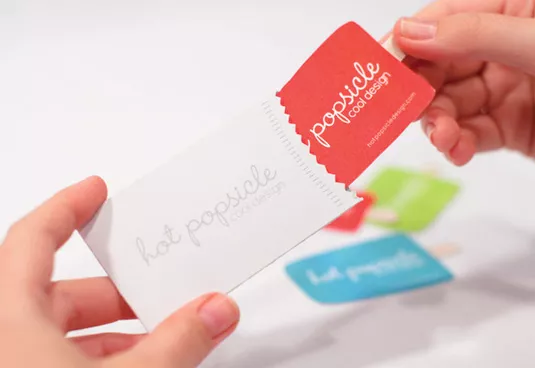
Graphic designer Rachel Kalagher was one of the three students behind Hot Popsicle — a collaborative branding effort for a fictional graphic design firm. Every aspect of these business cards' design is great, from the choice of colors to lolly stick attached. But, in particular, the super-cool envelope designed to look like an ice lolly wrapper is awesome.
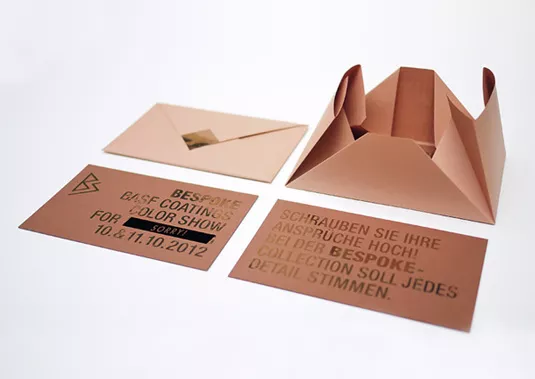
German creative agency Are We Designer created this original envelope design to house invitations to an automotive color show, which presents the current color collection. The 2012 theme the studio had to follow was “Wide Awake,” which they did perfectly with this beautiful, unfolding design.
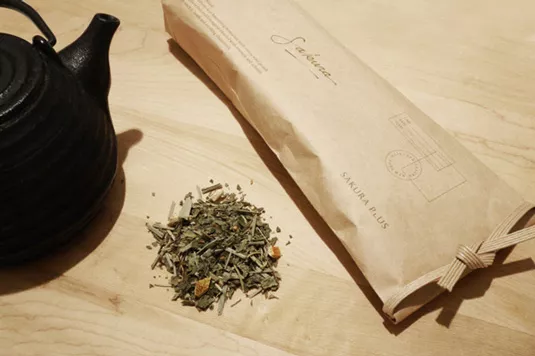
The team at New York-based graphic design agency Studio Network were inspired by traditional Japanese rice packaging when developing this envelope design for Nail & Spa Sakura. The beautifully crafted packaging was created to house the items of Sakura Plus, the salon’s organic product line.
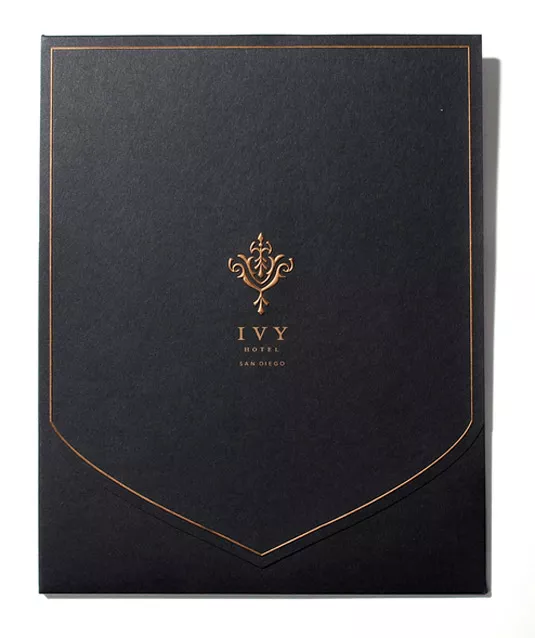
When high-end resort the Ivy Hotel in San Diego was looking to boost attendance for its meeting and wedding rooms, LA-based creative studio CRU Agency was commissioned to create a sales kit to help sell the facilities. Part of the result was this sophisticated envelope design, with features reflecting the high-end branding of the hotel.
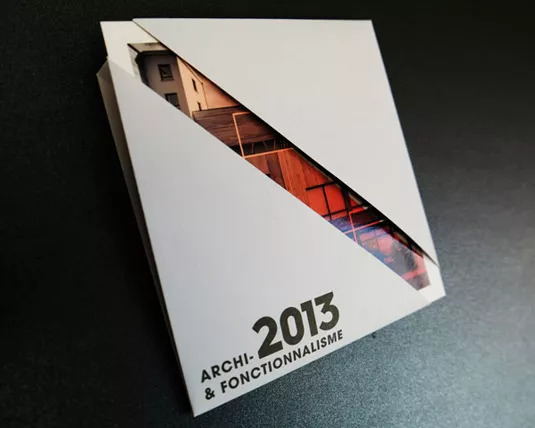
Multidisciplinary French design studio Chattermark developed this promotional pack for architectural company Sylvie Royer. The unique envelope design not only holds presentation cards, but also unfolds to reveal details about the company's team and proposals for the year.

Graphic design company Code 501 - Creative Band love to send letters by mail. So, the team created this beautiful set of envelopes, featuring a traditional brown kraft paper and a printed pattern on the inside. And to top it off, they designed custom stickers to seal them.
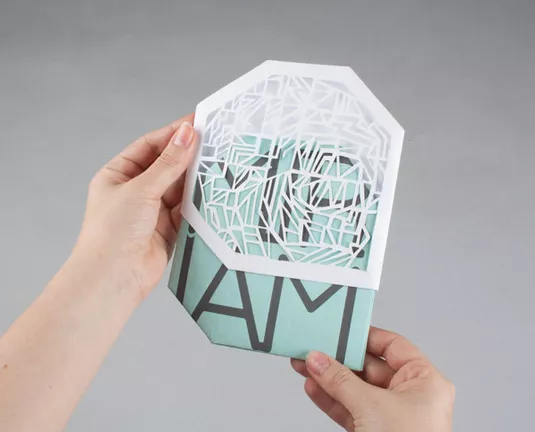
Miriam Sørli Onarheim is a graphic designer from Norway. After gaining a Bachelor of Arts degree in graphic design from Solent University in Southampton, UK, she developed this beautiful and original envelope design to house her personal showreel.
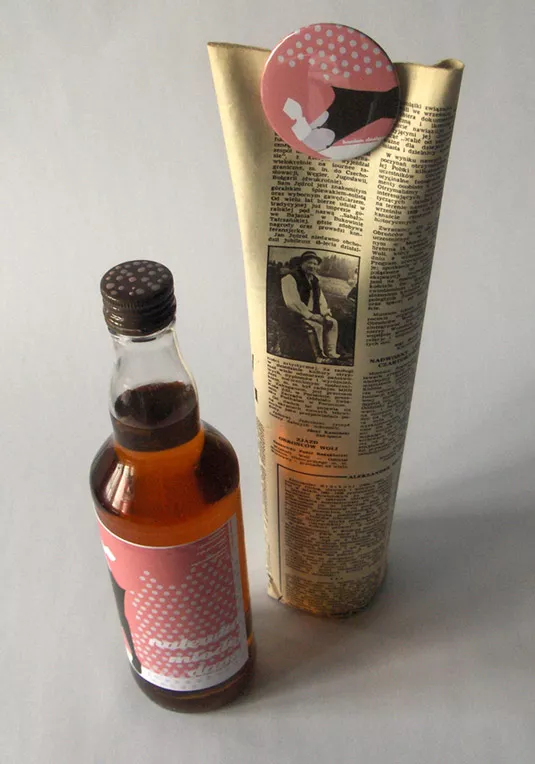
This cool, retro design comes from Brussels-based graphic designer Ewelina Bocian. Inspired by designs of the '80s, she comments on her design, "All the liqueurs were put in the most simple and old shape of bottles and packed in the paper that look like the Polish newspapers back in the '80s. All envelopes were then buttoned up with pins."
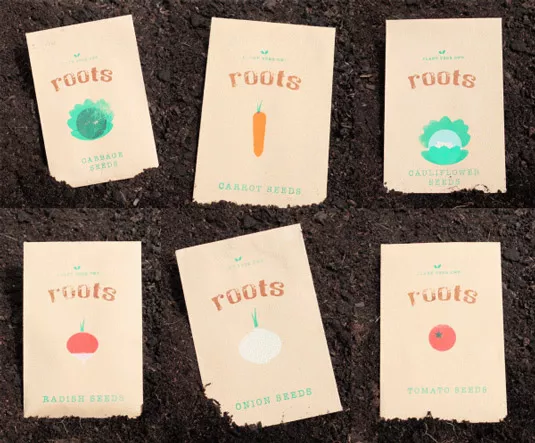
These charming little envelopes were created by graphic designer Jodie Smith as part of a pack for new allotment members. These seed packets — designed individually to reflect their contents — were all screen-printed.
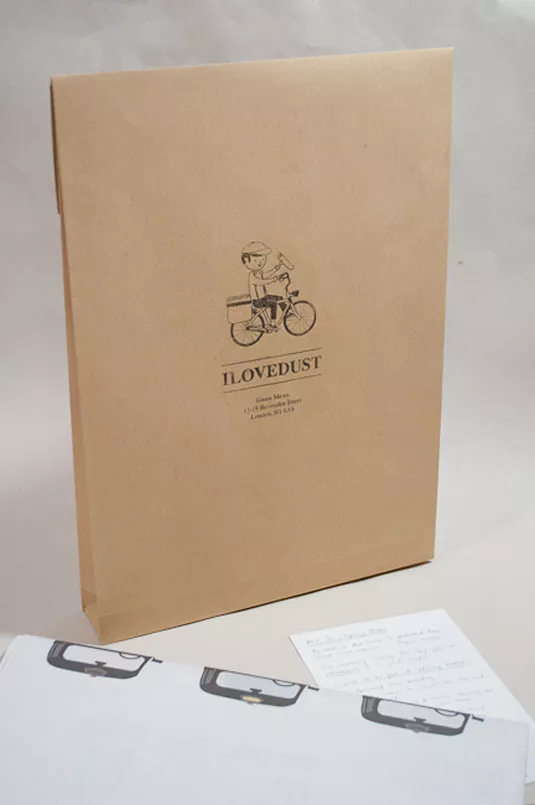
It's a simple design. These self-promotional envelopes were created by designer Alex Kwan. Much like a little brown shopping bag, he sent these out to prospective employers — the idea using the image of a newspaper boy, since the envelope carried a newspaper detailing Kwan's skills inside.




Comments